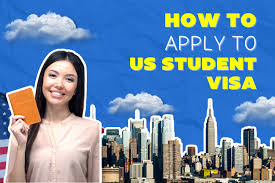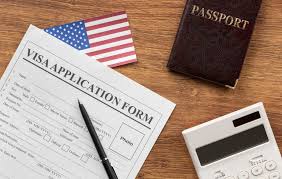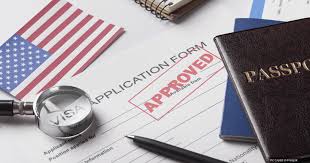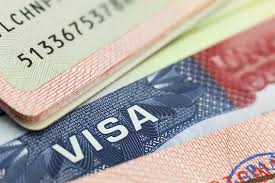How to Apply for a U.S. Student Visa: A Complete Guide

A U.S. student visa is an essential document for international students wishing to study in the United States. The visa allows students to attend a U.S. educational institution on a full-time basis. The two primary types of student visas are the F-1 Visa (for academic students) and the M-1 Visa (for vocational students).
The United States is home to some of the world’s most prestigious universities and colleges, making it a popular destination for students worldwide. However, applying for a U.S. student visa can be a complex process, requiring applicants to meet specific criteria and follow a series of steps.
This guide will walk you through the key requirements and steps involved in obtaining a U.S. student visa, ensuring you’re well-prepared for the application process.
Types of U.S. Student Visas
Before beginning the application process, it’s important to understand the two main types of student visas for studying in the U.S. — the F-1 and M-1 visas.
F-1 Visa: The F-1 visa is the most common visa for students planning to study at a U.S. college or university, language training program, or other academic institution. It is for those who wish to pursue a full-time degree program or non-degree programs in the U.S.
To qualify for an F-1 visa, you must:
- Be accepted into a full-time course of study at an accredited U.S. institution.
- Prove that you have sufficient funds to cover tuition, living expenses, and other costs while in the U.S.
- Intend to return to your home country upon completion of your studies.
M-1 Visa: The M-1 visa is for students wishing to study at a vocational or non-academic program in the U.S., such as technical schools or other programs that are not degree-granting. Like the F-1 visa, M-1 visa holders must also prove their ability to financially support themselves during their stay in the U.S. and demonstrate the intent to return home after their studies.
While the F-1 visa allows students to work in the U.S. under specific circumstances, M-1 visa holders are typically not permitted to work while studying.
Eligibility Requirements for a U.S. Student Visa
To apply for a U.S. student visa, you must meet certain eligibility requirements. These include:
Acceptance into a U.S. Educational Institution: Before applying for a student visa, you must be accepted into an approved U.S. school. The institution must be listed in the Student and Exchange Visitor Information System (SEVIS). You will need to receive a Form I-20 from the school, which is required for the visa application process.
Proving Sufficient Financial Support: You must demonstrate that you have enough financial resources to pay for tuition and living expenses during your time in the U.S. This can be shown through personal bank statements, affidavits of support from family members, or scholarship documentation.
Intention to Return Home: The U.S. student visa is a non-immigrant visa, which means applicants must demonstrate their intent to return to their home country once their studies are completed. This can be shown through ties to your home country, such as a job offer, family, or property.
English Proficiency: Most academic institutions in the U.S. require students to prove English proficiency through standardized tests like the TOEFL (Test of English as a Foreign Language) or IELTS (International English Language Testing System). Some schools may waive this requirement if the applicant has completed a certain level of education in English.
Health and Security Requirements: Applicants must undergo a medical examination to ensure they do not have any communicable diseases. Additionally, applicants must pass a security and background check to confirm that they do not pose a risk to public safety or national security.
The U.S. Student Visa Application Process
The process of applying for a U.S. student visa can be broken down into several steps, each requiring attention to detail and careful preparation.
Step 1: Apply to a U.S. Educational Institution: The first step is to apply and be accepted into a U.S. school that is authorized by the Student and Exchange Visitor Program (SEVP). Once you are accepted, the institution will provide you with Form I-20. This form is an essential document for the student visa application process.
Step 2: Pay the SEVIS Fee: Before applying for your student visa, you must pay the SEVIS fee, which supports the Student and Exchange Visitor Information System. The fee must be paid online, and you will need the receipt when you attend your visa interview.
Step 3: Complete the DS-160 Form: The next step is to complete the DS-160 form, which is the online application for a U.S. visa. This form collects important personal and travel information and includes questions about your background, criminal history, and previous visa applications. After submitting the DS-160 form, you will receive a confirmation page, which you need to bring to your visa interview.
Step 4: Schedule a Visa Interview: After completing the DS-160, schedule a visa interview at the U.S. embassy or consulate in your country. The wait time for a visa interview can vary depending on your location, so it is important to plan ahead and schedule your appointment early.
Step 5: Gather Required Documents: You will need to gather a variety of documents for your student visa interview. These documents typically include:
- Your Form I-20 from your U.S. school.
- Your DS-160 confirmation page.
- A valid passport.
- A recent passport-sized photo that meets the U.S. visa photo requirements.
- Proof of payment for the SEVIS fee.
- Evidence of sufficient financial support to cover your tuition and living expenses.
- Proof of ties to your home country, such as a job, family, or property.
Step 6: Attend the Visa Interview: During the interview, a consular officer will review your documents, ask questions about your academic plans, and assess your eligibility for a U.S. student visa. You may be asked why you chose to study in the U.S., how you plan to support yourself financially, and what your future career plans are after completing your education. It’s important to answer these questions honestly and clearly.
Step 7: Wait for Visa Approval: If your visa is approved, the consular officer will place a student visa stamp in your passport. You will be notified about when and how you can pick up your passport with the visa stamp. The visa is usually valid for the duration of your studies in the U.S.
Step 8: Enter the U.S. and Begin Your Studies: Once you have your student visa, you are allowed to travel to the U.S. and begin your studies. You can enter the U.S. up to 30 days before the start of your academic program. Upon arrival, you will need to show your I-20 and other documents to U.S. Customs and Border Protection (CBP).
Tips for a Successful U.S. Student Visa Application
The process of applying for a U.S. student visa can be intimidating, but with the right preparation, you can increase your chances of approval. Here are a few helpful tips:
- Start early: The student visa process can take several months, so it’s important to begin early to ensure you have enough time to complete all steps and gather the necessary documentation.
- Be honest: Always provide truthful information during the visa application process. Misrepresentation can result in delays or denial of your visa application.
- Prepare for your interview: During your visa interview, be clear about your academic plans and demonstrate your intent to return home after completing your studies.
- Stay organized: Keep copies of all documents, forms, and receipts for your records. This will help if you need to refer back to them during the application process.
Conclusion: Your Path to Studying in the U.S.
Securing a U.S. student visa is a critical step for international students wishing to pursue their education in the United States. The process involves several steps, from applying to a U.S. institution to attending a visa interview. By understanding the requirements, staying organized, and preparing thoroughly, you can ensure a smooth application process.
Studying in the U.S. opens up numerous academic and professional opportunities, and with the right visa, you can embark on your educational journey in one of the world’s most diverse and innovative learning environments. Whether you’re pursuing a bachelor’s, master’s, or doctoral degree, the U.S. offers an excellent opportunity for international students to thrive.




